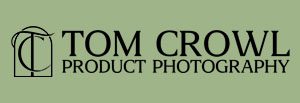Unlocking Creativity with Motion Blur in Product Photography
Motion blur isn’t just a mistake to avoid. When used right, it adds life and movement to your photos.
In product photography, sharpness is king. But introducing motion blur can set your images apart.
Before we start, understand motion blur techniques are varied and there is a lot to cover. Rather than create a long, confusing article, I am breaking this into 8 separate ones.
Each article will focus on a specific aspect of motion blur techniques for product photography.
This should make it easier for you to find the information you are looking for without sifting through a ton of content. A complete index is available here.
So, what is motion blur?
It’s the streaking effect you see when a subject moves while the camera’s shutter is open. By adjusting your camera settings for longer exposure times, you can capture this effect.
Why use motion blur in product photos?
- Add Energy: It conveys motion and excitement.
- Tell a Story: It adds depth and emotion to your images.
- Stand Out: It breaks the mold of traditional product shots.
In this complete guide, we’ll dive into how to use motion blur effectively.
You’ll learn:
- The basics of motion blur
- Essential equipment and camera settings
- Advanced techniques
- Post-processing tips
By the end, you’ll know how to enhance your product images with motion blur.
Ready to transform your photography? Let’s get started!
Understanding Motion Blur Basics
How Does Motion Blur Happen?
Motion blur occurs when something moves while the camera’s shutter is open. This can happen in a few ways:
- Subject Movement: The subject moves, but the camera stays still.
- Camera Movement: The camera moves while the subject stays still.
- Both Moving: Both the camera and the subject move at the same time.
The result? A streaking effect that shows the path of movement. It adds a sense of motion to a still image.

At the core of motion blur is shutter speed. Shutter speed is how long the camera’s sensor is exposed to light.
- Fast Shutter Speed (e.g., 1/1000 sec): Freezes motion for sharp images.
- Slow Shutter Speed (e.g., 1/30 sec or slower): Captures movement over time, creating blur.
But shutter speed isn’t the only factor. It’s part of the exposure triangle, which also includes:
- Aperture: Controls the size of the lens opening. Affects depth of field and light entry.
- ISO: Adjusts the sensor’s sensitivity to light. Higher ISO means more sensitivity but can add noise.
To create effective motion blur, you need to balance all three.

Tips for Balancing the Exposure Triangle:
- Use a slow shutter speed to capture motion.
- Narrow the aperture (higher f-stop) to prevent overexposure.
- Keep ISO low to minimize image noise.
To learn more about how shutter speed, aperture and ISO work together, check out my article: Camera Exposure Settings – A Beginner’s Guide
Types of Motion Blur in Product Photography
In product photography, motion blur can be your friend or foe.
1. Intentional Blur
This is a creative choice to show movement or energy.
- Conveys Action: Highlights how a product works, like the hands of a watch moving.
- Adds Drama: A pouring liquid can look more dynamic with motion blur.
- Techniques to Try:
- Panning: Move the camera with the subject. Keeps the product sharp but blurs the background.
- Long Exposure: Use slow shutter speeds to capture continuous movement.
2. Unintentional Blur
This happens when settings are off or the camera isn’t stable.
- Causes:
- Shutter speed too slow for handheld shots.
- Slight movements of the product during exposure.
- Why It’s Bad: In product photos, you usually want crisp, clear images.
- How to Avoid:
- Use a tripod for stability.
- Double-check your shutter speed.
- Ensure the product is secure and still.
Mastering Motion Blur
Understanding motion blur lets you decide when to use it creatively and when to avoid it.
- Use It To:
- Show movement.
- Tell a story.
- Make your images stand out.
- Avoid It When:
- You need sharp, detailed shots.
- Unwanted blur detracts from the product.
By grasping these basics, you’re on your way to using motion blur effectively in your product photography.
Ready to dive deeper? Take a look at the article index to explore some techniques and applications next!
Now It’s Your Turn
Grab your camera and start experimenting with motion blur today.
Unleash your creativity and watch your product photography come to life!
Discover How Professional Photography Can Elevate Your Brand
Get a Custom Quote Tailored to Your Specific Needs

Take a minute to fill out the form below. Doing so will help me understand your product photography needs. Once I receive your information, I'll reach out to you personally to discuss the project in more detail and create a customized quote for you.
You may also text me at: 410-596-4127 or E-mail me at: tom@tomcrowl.com


